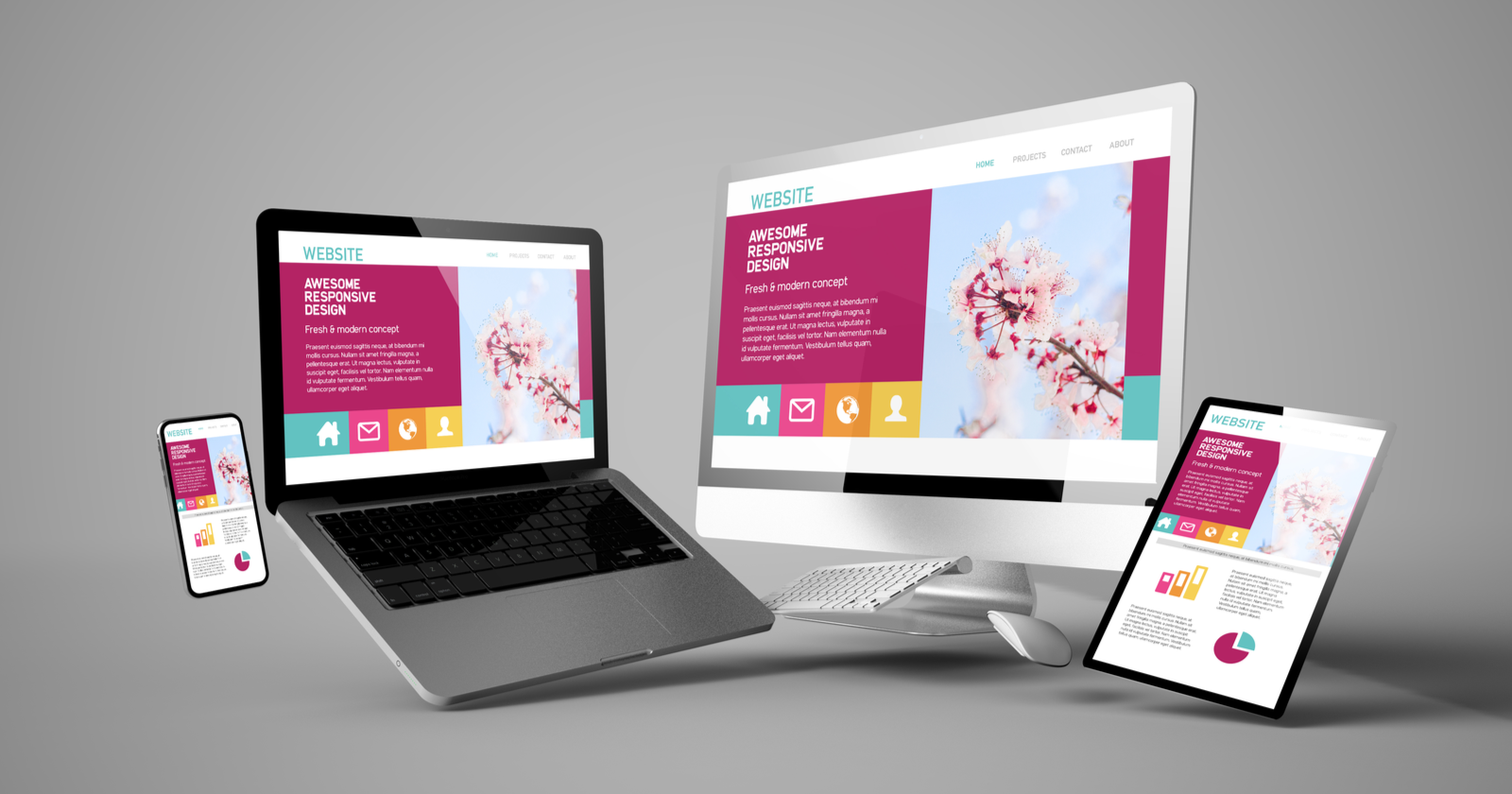Attract attention in the Digital World with Tailored Website Design Providers
Attract attention in the Digital World with Tailored Website Design Providers
Blog Article
Maximize Customer Experience With Cutting-edge Web Site Design Solutions
In today's electronic landscape, maximizing user experience with innovative site style services is critical for services looking for to engage their target market successfully. The integration of interactive elements can better raise the individual journey, prompting a reevaluation of conventional design approaches.
Comprehending User-Centric Style

To implement user-centric style properly, it is vital to perform thorough research study, consisting of user interviews, studies, and usability screening. These research methods provide beneficial information that notifies layout decisions, ensuring that the final product lines up with individual expectations. In addition, developing user identities can help designers understand and imagine with the end-users, directing the style process towards more appropriate remedies.
Moreover, iterative design is a crucial part of user-centric techniques. By constantly screening and refining designs based on user comments, designers can recognize discomfort points and areas of improvement, resulting in an extra sleek end product. Ultimately, user-centric layout is not simply a stage in the advancement process but a constant commitment to prioritizing individual needs, causing even more reliable and engaging electronic experiences.
Significance of Responsive Layouts
As digital interactions increasingly occur across a range of tools, the relevance of responsive layouts can not be overemphasized. A receptive format makes certain that a website adapts flawlessly to different display dimensions, from desktop monitors to smartphones. This versatility is crucial in today's multi-device landscape, where users expect a appealing and constant experience despite just how they access material.
The primary advantage of receptive design is enhanced customer satisfaction. When a site is enhanced for all tools, it minimizes the need for zooming, scrolling, or horizontal navigation, which can discourage users and lead to greater bounce rates. In addition, internet search engine like Google focus on mobile-friendly websites in their ranking algorithms, making receptive layouts essential for effective search engine optimization strategies.
Rather of managing different versions of a web site for various gadgets, a solitary, fluid design can be customized, saving time and sources. Inevitably, investing in receptive designs is not simply a trend; it is a fundamental principle of contemporary web layout that substantially enhances user experience and interaction.
Enhancing Navigating and Access
Effective navigation and ease of access are essential parts of a well-designed internet site, substantially affecting customer engagement and contentment. A straightforward navigating framework enables visitors to locate details quickly and with ease, reducing frustration and increasing the possibility of repeat check outs. Implementing clear, detailed labels for navigating web links, along with a rational power structure, can direct individuals flawlessly with the site.
Ease of access is just as critical, click for more info guaranteeing that all individuals, regardless of their disabilities or capacities, can interact with the website effectively. This can be achieved through making use of ideal color contrasts, text sizes, and alt message for pictures, which together improve the experience for aesthetically impaired customers. Moreover, including keyboard navigating and display visitor compatibility broadens access for individuals with varied requirements.
Routine usability testing can provide beneficial insights into navigating performance and ease of access issues. By gathering feedback from actual customers, designers can identify discomfort points and make informed adjustments. Eventually, prioritizing navigating and availability not only promotes inclusivity however additionally cultivates a favorable customer experience, strengthening the brand's dedication to top quality and customer treatment in a significantly digital landscape.
Making Use Of Aesthetic Pecking Order Efficiently
Aesthetic hierarchy functions as a directing structure in web site style, routing users' attention to the most vital elements on a web page. By tactically arranging visual elements such as spacing, typography, and color, developers can create a clear pathway for individuals to adhere to. This structure not just boosts user experience look at here now but additionally enhances material comprehension.
One efficient method to develop aesthetic power structure is through using size and range. Bigger components naturally attract more attention, making headlines and vital visuals prominent. Matching this method with contrasting colors can even more set apart main material from secondary details, guaranteeing that important info stands apart.
Moreover, the plan of aspects plays a critical duty in leading customer communication. Employing a grid format can produce a cohesive circulation, while whitespace aids to separate content and reduce cognitive lots - Website Design. This willful spacing permits individuals to refine find out this here information much more easily, resulting in enhanced engagement
Lastly, making use of regular layout patterns assists strengthen visual pecking order, supplying users with acquainted signs as they browse the site. By prioritizing these concepts, developers can efficiently maximize user experience, ensuring that visitors can easily locate the information they seek.
Incorporating Interactive Elements
The consolidation of interactive components right into internet site design can dramatically improve customer involvement and general experience. Interactive features such as sliders, surveys, and quizzes not just mesmerize users but also promote active participation, making the searching experience much more remarkable. By motivating users to connect, internet sites can successfully maintain interest and minimize bounce prices.
Additionally, incorporating vibrant material like animations and hover effects includes an appealing layer of interactivity. These aspects can lead individuals without effort through the site, highlighting vital information and calls to action. For example, computer animated buttons can attract focus and improve click-through rates.
Moreover, personalization with interactive tools such as chatbots or suggestion engines enables websites to cater to individual choices, promoting a sense of link. This customized strategy not only improves customer contentment yet likewise urges repeat gos to.
Including analytics devices to track interactions offers important understandings right into user actions, enabling continuous enhancement of the interactive aspects. Ultimately, a properly designed interactive experience changes a passive browsing session right into an engaging journey, leading to enhanced user complete satisfaction and commitment. Integrating interactive components is essential for optimizing individual experience in modern-day internet site design.
Verdict

In today's electronic landscape, making best use of individual experience through innovative internet site design solutions is critical for services looking for to engage their audience effectively. Eventually, prioritizing navigating and accessibility not just fosters inclusivity yet likewise grows a favorable user experience, strengthening the brand name's commitment to high quality and individual care in a progressively electronic landscape.

In conclusion, taking full advantage of individual experience via innovative website layout solutions necessitates a dedication to user-centric principles. Website Design.
Report this page